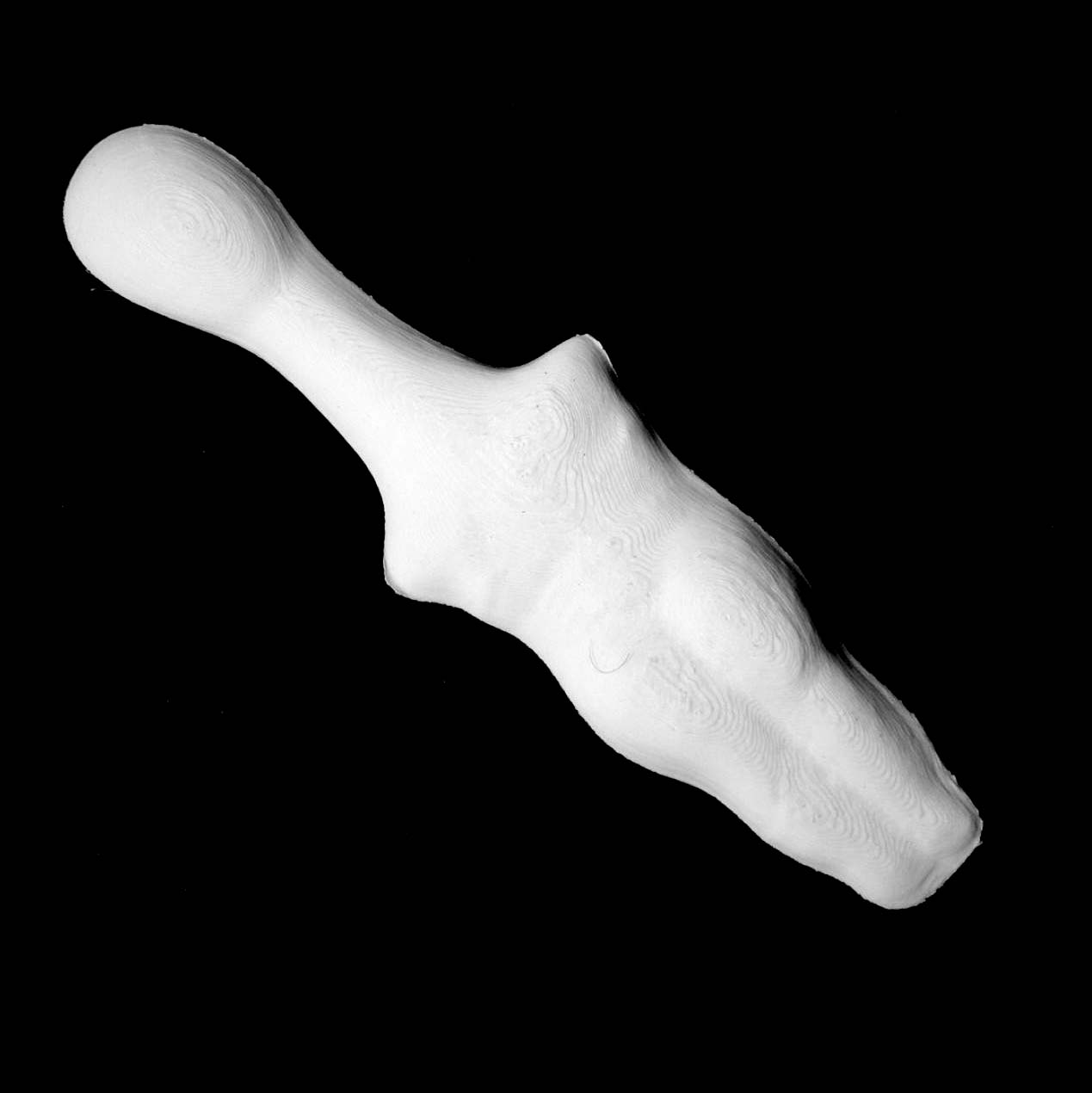
Cycladic Figurine 1 at The British Museum, London
myminifactory
"The significant Late Neolithic and Early Bronze Age Cycladic culture is best known for its schematic flat female idols carved out of the islands' pure white marble centuries before the great Middle Bronze Age culture arose in Crete, to the south. These figures have been stolen from burials to satisfy the Cycladic antiquities market since the early 20th century. Only about 40% of the 1,400 figurines found are of known origin, since looters destroyed evidence of the rest. A distinctive Neolithic culture amalgamating Anatolian and mainland Greek elements arose in the western Aegean before 4000 BC, based on emmer wheat and wild-type barley, sheep and goats, pigs, and tuna that were apparently speared from small boats. Excavated sites include Saliagos and Kephala (on Keos), which showed signs of copper-working. Each of the small Cycladic islands could support no more than a few thousand people, though Late Cycladic boat models show that fifty oarsmen could be assembled from the scattered communities. When the highly organized palace-culture of Crete arose, the islands faded into insignificance, with the exception of Delos, which retained its archaic reputation as a sanctuary through the period of Classical Greek civilization. The chronology of Cycladic civilization is divided into three major sequences: Early, Middle and Late Cycladic. The early period, beginning c. 3000 BC segued into the archaeologically murkier Middle Cycladic c. 2500 BC. By the end of the Late Cycladic sequence (c. 2000 BC) there was essential convergence between Cycladic andMinoan civilization.The first archaeological excavations of the 1880s were followed by systematic work by theBritish School at Athens and by Christos Tsountas, who investigated burial sites on several islands in 1898–99 and coined the term "Cycladic civilization". Interest then lagged, but picked up in the mid-20th century, as collectors competed for the modern-looking figures that seemed so similar to sculpture by Jean Arp or Constantin Brâncuși. Sites were looted and a brisk trade in forgeries arose. The context for many of these Cycladic Figurines has thus been mostly destroyed; their meaning may never be completely understood. Another intriguing and mysterious object is that of the Cycladic frying pans. Early Cycladic culture evolved in three phases, between ca. 3300 and 2000 BC, when it was increasingly submerged in the rising influence of Minoan Crete. Excavations atKnossos on Crete reveal an influence of Cycladic civilization upon Knossos in the period 3400 BC to 2000 BC as evidenced from pottery finds at Knossos." (Credit; Wikipedia) This object is part of "Scan The World". Scan the World is a non-profit initiative introduced by MyMiniFactory, through which we are creating a digital archive of fully 3D printable sculptures, artworks and landmarks from across the globe for the public to access for free. Scan the World is an open source, community effort, if you have interesting items around you and would like to contribute, email stw@myminifactory.com to find out how you can help.Scanned : Photogrammetry (Processed using Agisoft PhotoScan)
With this file you will be able to print Cycladic Figurine 1 at The British Museum, London with your 3D printer. Click on the button and save the file on your computer to work, edit or customize your design. You can also find more 3D designs for printers on Cycladic Figurine 1 at The British Museum, London.
